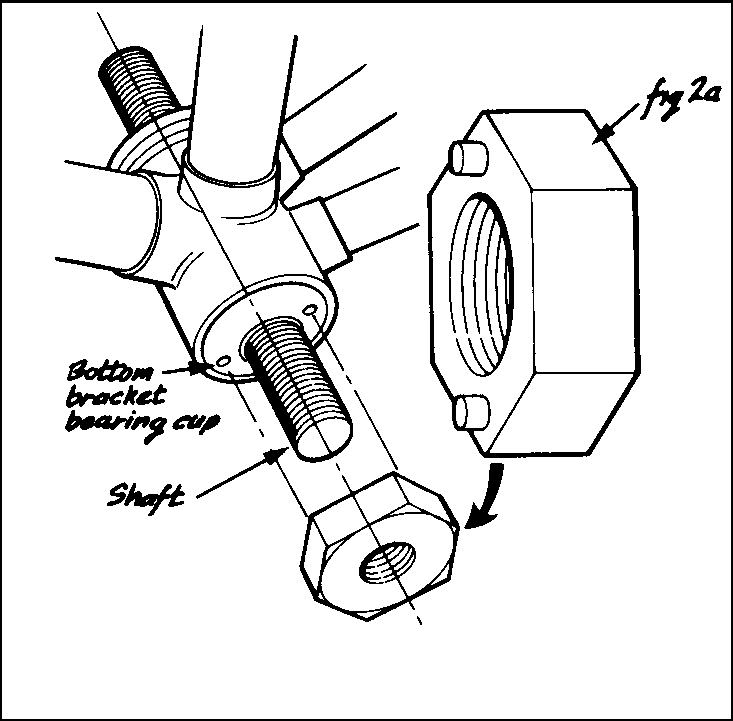Special
tools
Any restorer
knows how difficult it often is to take a rusty bike apart. It is naturally
of the utmost importance that all parts be seperated without breaking or
marring them since new parts are difficult if not impossible to obtain.
Althoug there are some publications on the market
that deal with the particular problems that are encountered ("Restoring
and tuning classic motorcycles" by Mr Irving is a good example) it is often
the "special tool" problem that gives even the skilled restorer headeachs
and as far as I am aware no publication deals with it.
In the following I will give some examples of
very easy to manufacture adapters which, in combination with normal workshop
tools, such as socket wrenches, serve as special tools.
These adapters are based on normally available
nuts and can be made by anyone without special equipment.
Because these adapters are so easy and cheap
to manufacture it is often not worth trying pipe-wrenches and other "universal"
tools (such as hammer and chisel!!) and thus you won't be tempted to use
these kind of tools.
Examples
In Figure
1 an example is given of a mounting of a final drive sprocket on a sleeve
pinion. Although in most cases not rusty, the nut which holds the sprocket
on the sleeve pinion is tightened up with many footpounds. In particular
when you have the gearbox on the workbench it is difficult to hold the
final drive sprocket in position. This can of course be done with the tool
referred to in Figure 1A, but what to do if there are no teeth left on
the sprocket...?

In "Restoring and tuning classic motorcycles" the
use of an old dog clutch is proposed to hold the sleeve pinion, but of
course not many people have got dog clutches for all the gearboxes that
were on the market 30 years or more ago.
The solution is here that you make your own dog
clutch out of a nut, big enough to give grip on the entire area of the
dog faces. In Figure 1B is shown how portions of the nut are filed away
with a square file to fit the dogs on the sleeve pinion.
I tried this method myself on a nut and sprocket
(which contrary to the normal conical fit had also a srew thread) which
would not come loose by any other means and was very succesful. The use
of a pneumatic impact wrench is possible and can be advised for work on
the workbench.
In Figure 2A an example in
shown of an adapter that I used to tackle the rusty remains of a bottom
bracket bearing cup (Figure 2) This adapter is made by drilling two holes
of the desired pin
diameter at the appropriate distance in a big nut, the
hole of which just fits over the shaft. In the drilled holes silver steel
pins are inserted. The adapter thus provided is extremely strong and since
it can use the shaft as a guide is very easy to work with. If necessary
a plastic bush inside the nut hole can be used so as to adapt the size
of the hole to the shaft.

 In Figure 3
an example is shown of an adapter that is used for the type of nut shown
in Figure 3A. This type of nut is used in some early french gearboxes.
In Figure 3
an example is shown of an adapter that is used for the type of nut shown
in Figure 3A. This type of nut is used in some early french gearboxes.

In Figure 4 the nut is filed out to a square
so that square nuts or pins can be gripped. This adapter, which is easily
hardened, is the answer to square headed brake adjusters, which often because
of their deep position, cannot be gripped by open spanners.
Of course other adaptations are possible. However
I would like to leave these to the imagination of the interested restorer.



